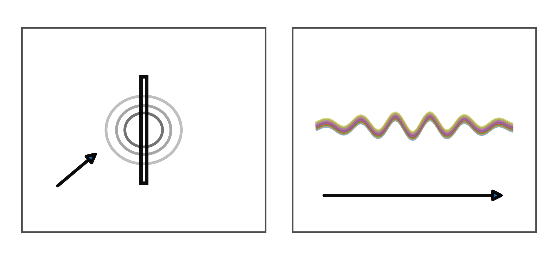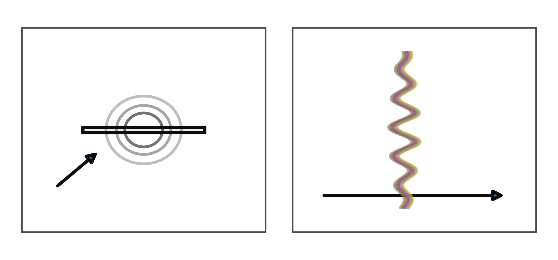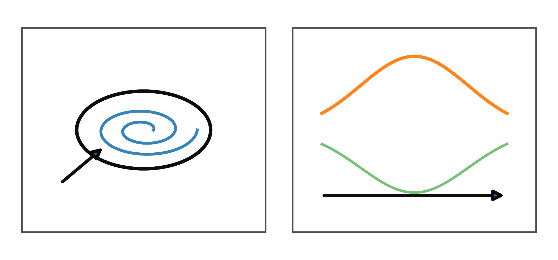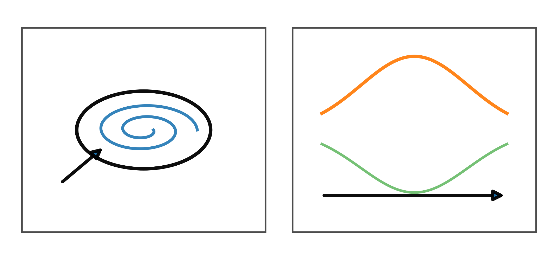Home / Chapter 5: Microscopic Particles
Intro
A wave packet is a compact wrinkle of tension in the Energy Sea that can carry itself forward for some distance. It is not self-sustaining—unlike a particle, it is not a long-lived, knotted filament—but advances by the medium’s block-to-block handoff. One rule governs all wave packets: tension sets the local speed limit; the tension gradient sets the direction.
I. What We Mean by “Wave Packet”
Think of the Energy Sea as a continuous medium that can tighten or relax. When disturbed, a finite envelope of oscillation forms; inside the envelope, vibrations are phase-coherent. That envelope is the wave packet.
- How it differs from a particle: a particle is a stable, self-supported knot of Energy Threads; a wave packet is merely a wrinkle and fades by absorption, scattering, or reprocessing.
- Why it travels: the medium relays state from one small patch to the next, pushing the leading edge forward like a baton pass.
II. How Wave Packets Propagate (Underlying Mechanism)
- Speed set by tension. Where the Sea is tighter, the relay runs faster. The same kind of packet can thus have different speed limits in different places; in nearly uniform regions it looks “constant-speed.”
- Path guided by the gradient. Packets drift toward smoother, lower-impedance routes; macroscopically we call this “being acted on by a force.”
- Shape maintained by coherence. The more compact the envelope and the more in-step the oscillations, the more the packet behaves like a well-shaped lump; loss of coherence blends into background noise.
- Two-way coupling with the environment. While traveling, a packet rewrites the local tension; in turn the environment reshapes the packet (attenuation, band reshuffling, polarization rotation).
III. Why “Bosons” Are Wave Packets
In Energy Filament Theory (EFT), bosons are not a separate species of “particles.” They are families of wave packets distinguished by how wrinkles arise, where they can run, and which structures they couple to.
- Photon: transverse-shear packet
- What it is: a lateral, polarization-carrying wrinkle of the Sea.
- How far it runs: extremely far in transparent windows; tension inhomogeneity yields path time-delays and polarization rotation.
- What it couples to: charged structures (e.g., electron near-field orientations) most strongly; it can be absorbed, excited, or scattered.
- What you observe: interference, diffraction, polarization, gravitational lensing, and the “achromatic common term” in time delays (all colors along the same path are commonly slowed or detoured).
- Gluon: wrinkle confined to a color channel
- What it is: energy undulation propagating inside a color-filament bundle; outside the channel it rapidly rethreads into hadronic fragments.
- How far it runs: only inside the channel—hence collider events show jets and hadronization, not free-gluon snapshots.
- What you observe: collimated sprays of hadrons; energy densest near the channel.
- Weak carriers (W, Z): thick, near-source envelopes
- What they are: hefty, localized packets with thick envelopes, strong coupling, and short lifetimes.
- How far they run: they transfer and decay near their birthplace, producing characteristic clusters of products.
- What you observe: brief “flashes” in colliders followed by multiparticle decay patterns.
- Higgs: breathing-mode of the tension field
- What it is: a scalar “inhale–exhale” of the Sea—bulk breathing of tension.
- What it does: shows that the Sea can be excited this way. Mass does not flow from the Higgs as a faucet here; in this framework, mass arises from the self-support cost of stable knots plus tension guidance. The Higgs is evidence of a particular excitation.
- What you observe: a one-off excitation that promptly decouples, leaving stable branching ratios.
Unifying line: boson = wave packet. Some roam far (photons), some run only in channels (gluons), some disperse near the source (W/Z, Higgs).
IV. Macroscopic Wave Packets: Gravitational Waves
- What they are: when massive systems rearrange violently (mergers, collapse), the large-scale tension landscape is rewritten and vast shear ripples sweep the Sea.
- How they run: still obey “tension sets speed, gradient sets direction”; weak coupling to matter lets them travel extremely far.
- What you observe: phase-locked “ruler stretch” in interferometers, chirps that sweep from high to low frequency, and possible co-directed time-offsets when crossing large structures.
V. Where “Forces” Come From: How Packets Push Particles
- Changing the terrain produces force. When a packet arrives, it slightly tightens or loosens local tension, altering gradients; particles drift along smoother directions—what we feel as pull or push.
- Often an average effect. We time-average fast oscillations to reveal net outcomes (radiation pressure, optical dipole traps, envelope-driven transport).
- Selective coupling. With poor structural match, packets pass through with little interaction; with good match, tiny energy can control strongly (e.g., optical tweezers).
- Two guardrails: never exceed the local propagation ceiling; always include feedback (particles change, environments are rewritten, packets are reshaped).
VI. Emission and Absorption: Three Selective Matches
- Frequency match. An emitter’s internal cadence favors certain packets; a receiver that matches that cadence “takes them in” efficiently.
- Orientation match. Directional near-fields pass some polarizations and reject their opposites.
- Structural match. Channels accept channel-bound packets (gluons ↔ color bundles); thick envelopes act only near sources (W/Z, Higgs); photons run freely through clear windows.
VII. Retuning in Complex Environments
- Waveguides and channels. Low-impedance corridors in the tension map steer packets straight (polar jets, energy-gathering lanes in interstellar filaments).
- Reprocessing and thermalization. On a “rough sea,” packets are multiply scattered; bands are “smoked,” turning sharp lines into thick spectra.
- Polarization flips and twists. Along oriented media, polarization can rotate smoothly or flip across bands, leaving readable chirality waypoints.
VIII. How This Meets Familiar Experiments
- Photons: polarization and interference tests; lensing-induced time delays; achromatic common delays in pulsars/fast radio bursts.
- Gluons: jet structure and hadronization patterns in high-energy collisions.
- W/Z, Higgs: near-source flashes with statistical decay products.
- Gravitational waves: phase-coherent interferometer signals and memory effects.
IX. Does This Conflict with Mainstream Accounts?
No. Mainstream theories compute these phenomena accurately using the language of fields and particles. We offer a complementary, material picture of the same physics:
- call “fields” Sea excitations and “particles” self-knotted filaments;
- treat “interactions” as tension rewriting and coupling selectivity;
- view “invariant propagation” as locally invariant but tension-modulated across environments.
- Within tested domains, both pictures agree on observables; our contribution is a material map that shows where the Sea is tight or slack, and why one route is smooth while another is blocked.
X. Summary
Wave packets are traveling wrinkles of tension in the Energy Sea; bosons are families of such packets; gravitational waves are large-scale echoes of tension geography. They obey a simple but powerful unifier: tension sets the speed limit, the tension gradient sets the direction; matching controls coupling strength, and feedback ensures mutual shaping.
Figure Guide (Reading the Diagrams Without Misinterpretation)
A) Unified Rules for Interpreting Figures
- Curves are not trajectories: they depict the instantaneous spatial ripples of the Energy Sea—wrinkles of tension—not the path of a bead.
- Arrows = direction of propagation: the whole pattern advances by point-to-point relay in the medium; at the next instant the entire shape shifts along the arrow.
- With-channel vs no-channel:
- Gluon: runs only inside a color channel (side view: a pale tube open to the right; the internal waveform is narrower than the tube).
- Photon, W/Z, Higgs, gravitational wave: have no “tube,” yet remain constrained by the local tension speed limit and its gradient.
B) Photon — Linear Polarization (Vertical / Horizontal)
|
|
- Head-on view
- Concentric faint rings indicate equal phase / spot contour; they do not encode polarization.
- Thin straight ticks mark the electric-field orientation: E vertical or horizontal.
- Convention: k denotes propagation; B is perpendicular to both E and k (use arrows or dot/cross symbols; labels optional).
- Side view
- Vertical linear polarization: draw a sinusoidal thin ribbon along the propagation direction; its up-down sway represents E oscillating vertically. The curve shows field amplitude versus position, not a photon track.
- Horizontal linear polarization: a sinusoidal ribbon opening vertically; its left-right sway represents E oscillating horizontally. Again, it only sketches amplitude versus position.
- Both motions lie in the plane transverse to k—a transverse-shear wrinkle; no longitudinal E appears in the far field.
- Physical points
- In free-space far field: E ⟂ B ⟂ k, with E and B varying only in the transverse plane.
- Near fields or constrained media may host components along k; those are bound or guided modes, not en-route photons.
- Photons are the most long-ranged packets; where tension is nearly uniform they appear “constant-speed.” Gradients can yield path time-delay, polarization rotation, and other path/environment-dependent effects.
C) Photon — Circular Polarization (Helicity)
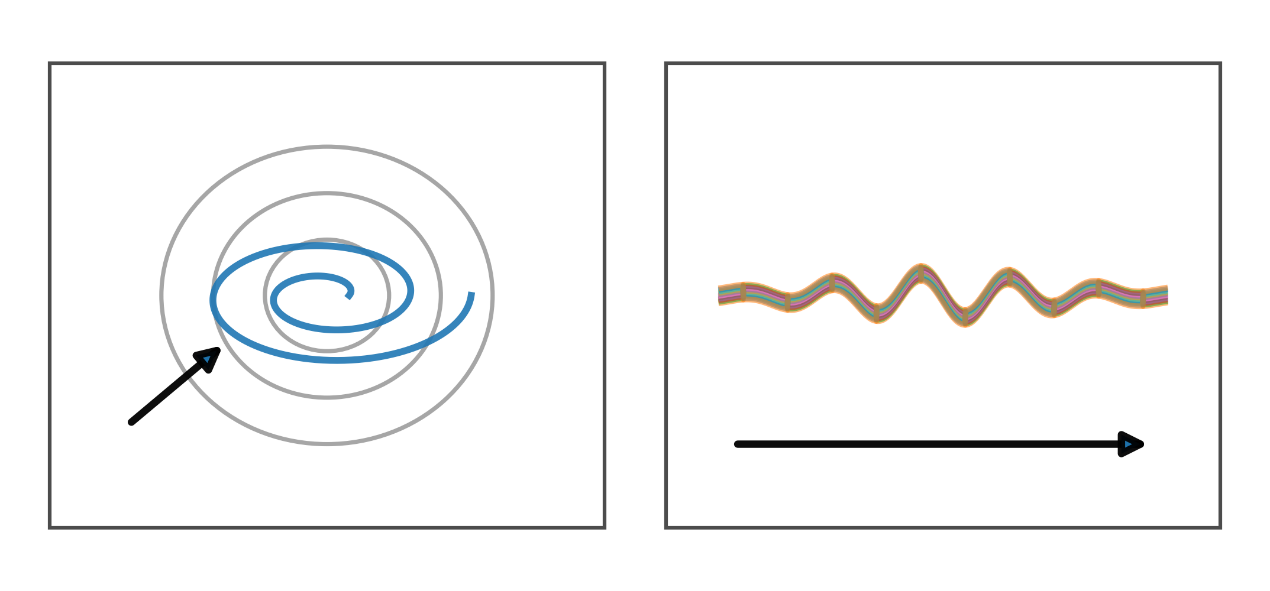
- Head-on: a small spiral shows phase rotating in the transverse plane (left- or right-handed).
- Side view: a thin ribbon with a gentle helical feel propagates to the right; the spiral reflects continuous phase rotation during flight.
- Physical point: circular polarization couples selectively to chiral media or oriented near-field structures.
D) Gluon — Propagation Within a Color Channel
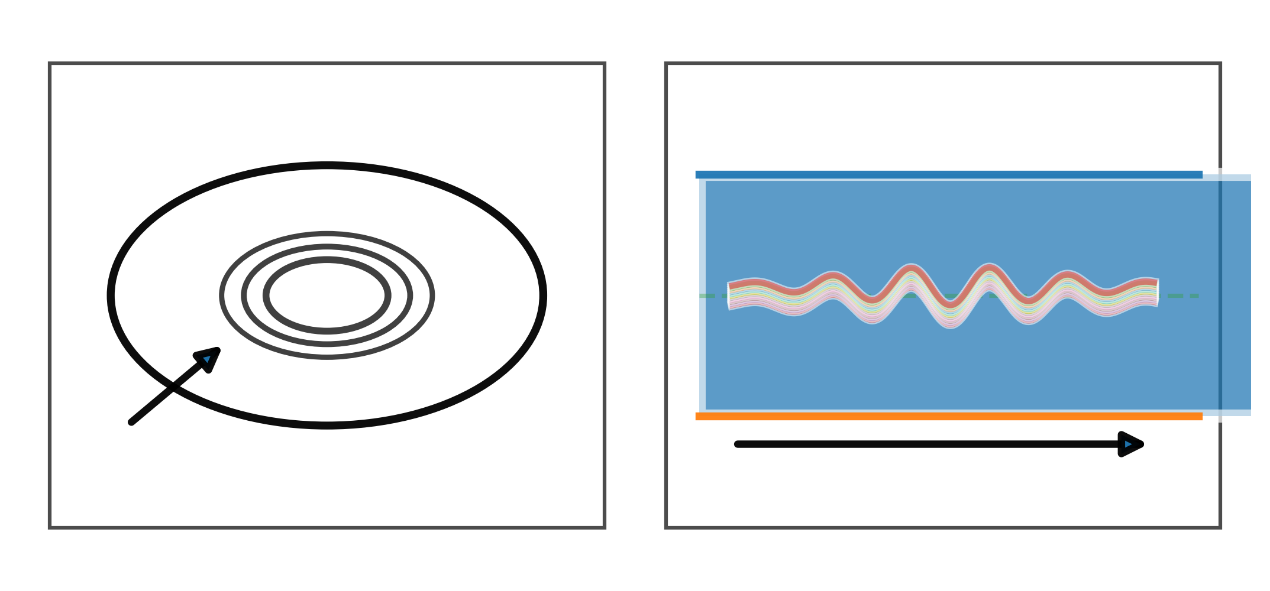
- Head-on: an ellipse is the channel cross-section; nested contours show the instantaneous energy undulation inside.
- Side view: a pale “long tube” (open on the right) is the color conduit; the internal waveform is clearly narrower, indicating in-channel travel.
- Inside the channel: the gluon is a color-constrained coherent packet guided by the filamentary conduit.
- Leaving the channel: coherence cannot be sustained; packet energy drains back to the Sea, pulling out nearby filaments and reclosing into allowed color-neutral structures—hadron bundles.
- What we observe: not “free gluons,” but hadronization and jets—the reorganized, energy-at-rest appearance.
E) W⁺ / W⁻ — Near-Source Thick Envelopes
|
|
- Head-on: compact envelopes with subtle chiral texture (opposite sense for W⁺ and W⁻ as a visual cue).
- Side view: symmetric “fat envelopes” take a few steps and decay/decouple—most action completes near the source.
- Physical point: thick envelopes couple strongly and live briefly—more a heavy, local handoff than a long-range ripple.
F) Z — Near-Source Thick Envelope, No Helicity Mark
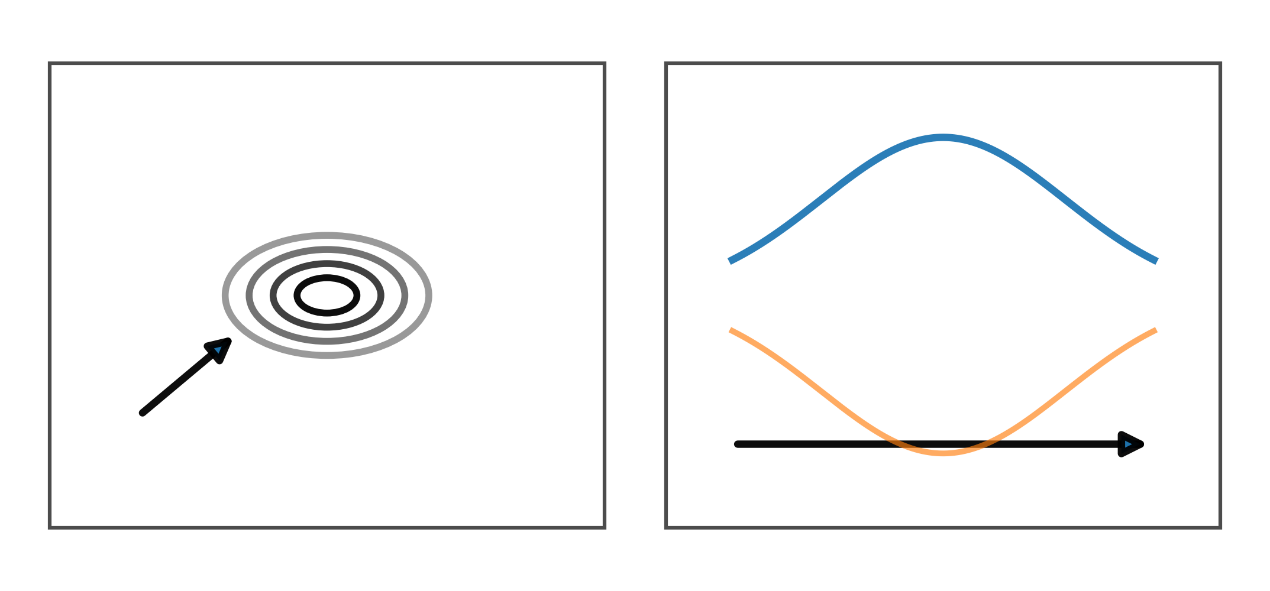
- Head-on: concentric “breathing rings,” no handedness emphasized.
- Side view: thick, symmetric envelope similar to W, visually more neutral.
- Physical point: likewise a near-source packet that decouples after short-range transfer into stable products.
G) Higgs — Scalar “Breathing” Packet
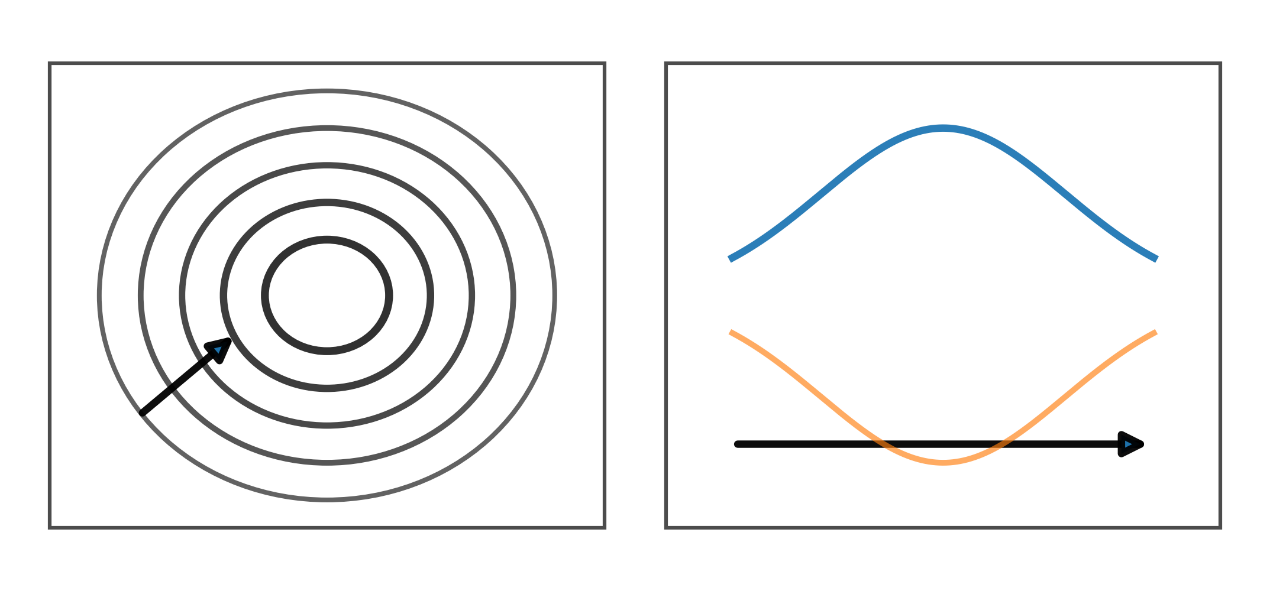
- Head-on: multiple concentric rings indicate a global in-out breathing of tension.
- Side view: a broad, symmetric envelope that advances then quickly disperses.
- Physical point: it demonstrates that the Sea supports this scalar excitation. In this framework, mass arises from the self-support cost of stable knots plus tension guidance; the Higgs evidences the existence of the scalar mode.
H) Gravitational Wave — Macroscopic Tension Ripple
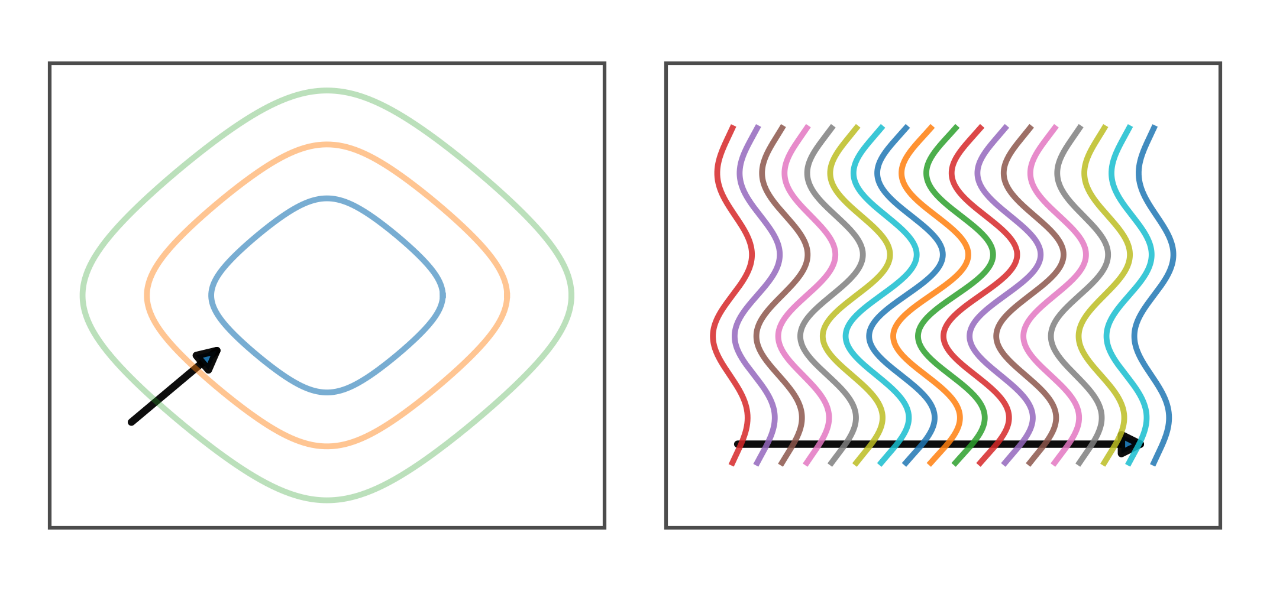
- Head-on: quadrants of stretching and squeezing—typical quadrupolar signature.
- Side view: vertical “stripes” gently torsioned left–right as the whole pattern advances.
- Physical point: weakly coupled to matter, hence extremely long-ranged; traversing large structures can imprint achromatic, path-dependent time offsets.
Copyright & License (CC BY 4.0)
Copyright: Unless otherwise noted, the copyright of “Energy Filament Theory” (text, charts, illustrations, symbols, and formulas) belongs to the author “Guanglin Tu”.
License: This work is licensed under the Creative Commons Attribution 4.0 International (CC BY 4.0). You may copy, redistribute, excerpt, adapt, and share for commercial or non‑commercial purposes with proper attribution.
Suggested attribution: Author: “Guanglin Tu”; Work: “Energy Filament Theory”; Source: energyfilament.org; License: CC BY 4.0.
First published: 2025-11-11|Current version:v5.1
License link:https://creativecommons.org/licenses/by/4.0/
